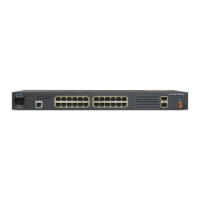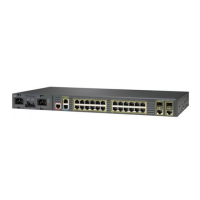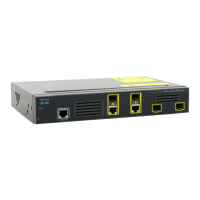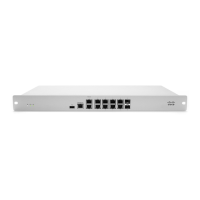21-16
Cisco ME 3400 Ethernet Access Switch Software Configuration Guide
OL-9639-07
Chapter 21 Configuring IGMP Snooping and MVR
Understanding Multicast VLAN Registration
The switch CPU identifies the MVR IP multicast streams and their associated IP multicast group in the
switch forwarding table, intercepts the IGMP messages, and modifies the forwarding table to include or
remove the subscriber as a receiver of the multicast stream, even though the receivers might be in a
different VLAN from the source. This forwarding behavior selectively allows traffic to cross between
different VLANs.
You can set the switch for compatible or dynamic mode of MVR operation:
• In compatible mode, multicast data received by MVR hosts is forwarded to all MVR data ports,
regardless of MVR host membership on those ports. The multicast data is forwarded only to those
receiver ports that MVR hosts have joined, either by IGMP reports or by MVR static configuration.
IGMP reports received from MVR hosts are never forwarded from MVR data ports that were
configured in the switch.
• In dynamic mode, multicast data received by MVR hosts on the switch is forwarded from only those
MVR data and client ports that the MVR hosts have joined, either by IGMP reports or by MVR static
configuration. Any IGMP reports received from MVR hosts are also forwarded from all the MVR
data ports in the switch. This eliminates using unnecessary bandwidth on MVR data port links,
which occurs when the switch runs in compatible mode.
Only Layer 2 ports take part in MVR. You must configure ports as MVR receiver ports. Only one MVR
multicast VLAN per switch is supported.
Using MVR in a Multicast Television Application
In a multicast television application, a PC or a television with a set-top box can receive the multicast
stream. Multiple set-top boxes or PCs can be connected to one subscriber port, which is a switch port
configured as an MVR receiver port.
Figure 21-3 is an example configuration. DHCP assigns an IP
address to the set-top box or the PC. When a subscriber selects a channel, the set-top box or PC sends
an IGMP report to Switch A to join the appropriate multicast. If the IGMP report matches one of the
configured IP multicast group addresses, the switch CPU modifies the hardware address table to include
this receiver port and VLAN as a forwarding destination of the specified multicast stream when it is
received from the multicast VLAN. Uplink ports that send and receive multicast data to and from the
multicast VLAN are called MVR source ports.

